Intermittent Fasting is a popular lifestyle diet and many people have discovered that intermittent fasting for weight loss really works, but did you know that IF has other benefits benefits besides just it’s effectiveness for helping you lose weight? On this page, we’ll discuss what intermittent fasting is, how it works, the various types of intermittent fasting schedules, tips on how to succeed with intermittent fasting, and much more. In addition, I’ll also share my own personal results with intermittent fasting – a lifestyle I’ve been living now for nearly 2 years.
Editor’s Note: This article is part of a series on Intermittent Fasting and this is the MAIN PAGE of that series. This article has been updated numerous times to reflect what I’ve learned about IF along the way. You’ll find links to the other articles in the IF series below.

Hi, I’m Mike, That Helpful Dad. It’s been nearly 2 years since I began this journey and I’m excited to share what I’ve learned along the way so that, if YOU try intermittent fasting, you’ll be set up for success!
Meanwhile I should point out that this article is NOT a ‘scientific’ review of Intermittent Fasting; instead it’s a personal experience story from one man’s POV. I don’t pretend to know everything about Intermittent Fasting. I’m writing to hopefully inspire you with ideas for a technique that perhaps can help you make your life better in the same way Intermittent Fasting helped me. Good luck.
So what have I learned after nearly two years of Intermittent Fasting?
Overall I learned that Intermittent Fasting is surprisingly easy and it gives me lots of energy. It’s also a very forgiving diet that helps you overcome the inevitable times when you ‘fall off the wagon.’
Intermittent Fasting has become my new ‘lifestyle’ and I can’t see myself going back anytime soon. HOWEVER Intermittent Fasting is NOT a magic cure-all and there are a few important tips to keep in mind if you want to try it – I’ll detail them for you here.
Intermittent Fasting Table of Contents
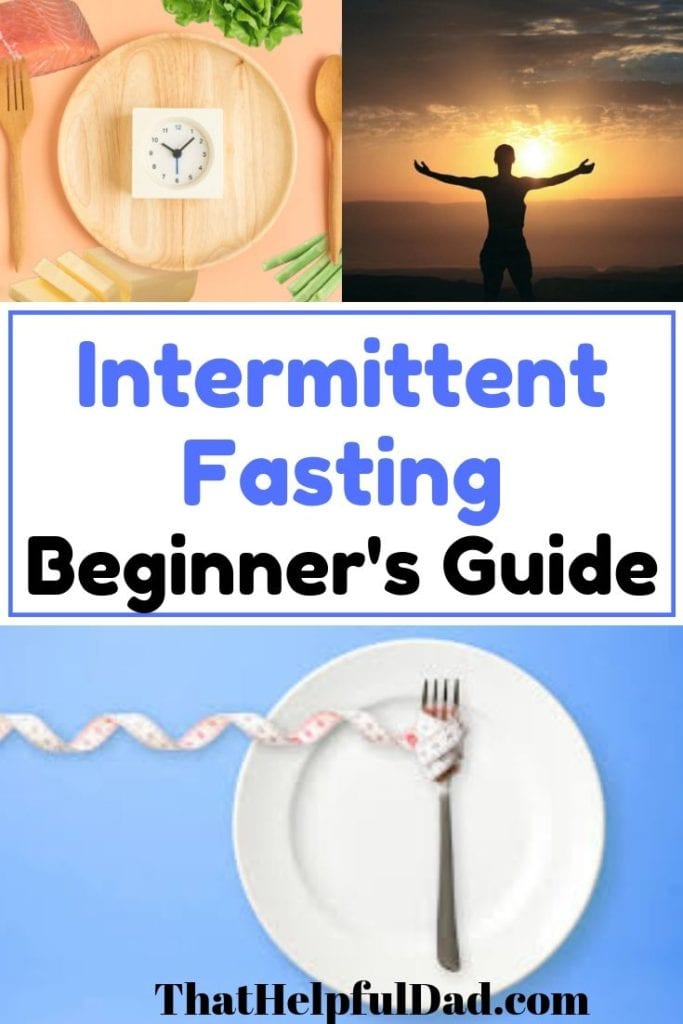
I. What is Intermittent Fasting?
Intermittent fasting is a catch-all term for lifestyle diets in which someone doesn’t eat for a preset period of time (the fasting state) and does eat during a preset period of time (the fed state).
At it’s most basic level it amounts to not eating after dinner and possibly delaying breakfast. And if you are a beginner looking to try IF this is where you may want to start.
Personally I use the 16/8 Intermittent Fasting schedule (see more below) where I don’t eat for 16 hours and eat all my food within an 8 hour window. It looks like this: stop eating around 6pm and start eating again around 10am the next day.
Why would someone want to try intermittent fasting?
Most people choose to try intermittent fasting because it helps with weight loss. However there are are a number of benefits to Intermittent Fasting too – including potentially increased energy, more mental clarity, loads of time (and money) saved on not preparing the meals you skipped, and much more. (Read my personal journey as well as the references below to learn more about this).
There are many types of intermittent fasting diet plans and eating schedules and I’ll detail them below but first let’s talk about what most people use IF for…
II. Intermittent Fasting for Weight Loss
By far the number one reason why I hear most people try intermittent fasting is because they are attracted to the possibility of using intermittent fasting for weight loss.
But does intermittent fasting for weight loss really work?
For our purposes, the reason why Intermittent Fasting seems to work for weight loss is basically common sense…
If you are restricting or eliminating calories consistently over time, then you’ll tend to lose weight. It’s not rocket science.

Remember, with intermittent fasting you are not eating for a predefined period of time (for example with 16/8 Intermittent Fasting you don’t eat for 16 hours). Now when you put yourself into this ‘fasting’ state and because you are not eating, you’re by definition restricting calories (at this during this time period) — and if you do that consistently over time you’ll lose weight.
So that’s it? Intermittent Fasting is just caloric restriction?
Not quite.
There’s a lot of more to the story about intermittent fasting for weight loss, so I wrote a separate article about it. You can read it here…(click the pick)
If you are interested in using intermittent fasting for weigh loss my article also include a plan for success as well as links to books on the topic.
III. Intermittent Fasting Schedules
What are the most popular types of intermittent fasting eating schedules?
There are many different versions of intermittent fasting. Here are the most popular types are…
- Time Restricted Feeding (16/8, 14/10, 12/12) – where you don’t eat for 16 hours and eat all your food within the remaining 8 hours. I personally live the 16/8 Intermittent Fasting lifestyle and love it!
- Eat, Stop, Eat (OMAD, 24-hour fasting, Whole Day Fasting) – as the name implies, you’re basically fasting for 23 hours and then eating One Meal a Day (OMAD) or going for a full 24 hours before eating.
- 5:2 Intermittent Fasting – With 5/2 Fasting you’ll be trying to limit your total daily calorie intake to only 500 calories for TWO DAYS during the week. The other 5 days you’ll be eating your typical (hopefully healthy) diet.
- Warrior Diet – a type of Time Restricted feeding in which you do a version o 20/4 Intermittent Fasting where you eat little to no food for 20 hours and then eat one large meal at night during a 4-hour window.
- Extended Day Fasting – 36 Hour Fasting, 48 Hour Fasting, and even 3-7 Day Fasting. I.E. the king of fasting. Yikes!
Because this is another in-depth topic, I wrote a separate article further detailing the types of intermittent fasting, you can read that by clicking this pic…
IV. Intermittent Fasting Results
As I mentioned, I’ve been a practitioner of the Intermittent Fasting lifestyle for about 2 years now and I can honestly say that this ‘diet’ has changed my life in many positive ways. I’ve written about the benefits of Intermittent Fasting on this blog numerous times in the past and today I’d like to share more of my Intermittent Fasting Results with you – providing transparency of results for 1 month, 3 months, 6 months, 1 year, and even now out to 2 years.
You can read my full story here – it includes why I started intermittent fasting as a beginner, what my initial fears were about intermittent fasting, what my results were from 1 month through to 2 years, and what I learned along the way.
Read my intermittent fasting results article here…
V. So What CAN You Eat During a Fast?
During the period while you are fasting (on most of the intermittent fasting schedules) pretty much all you can have is black coffee or simple tea. Some research suggests you can add some cinnamon (for blood sugar control) to the coffee (and I do this).
What about Butter or Coconut Oil?
There is also a LOT of debate (see references below for a sample) about whether you can also add in ‘good fats’ like grass-fed butter and/or coconut oil to your morning tea or coffee and that this won’t break the fast because apparently these good fats…
- Keep you in the ketosis (fat-burning state).
- They don’t spike an insulin response like eating carbs would.
- They provide your brain-food (the fat is used by your brain for energy).
- So long as you keep it under 50 calories from these good-fats you are supposedly still fasting.
Look, I’m not scientist here and I can’t tell you with medical research certainty if any of this is this is true or not, all I can tell you in that my experiments have shown and for me, using 1/2 TBSP of grass-fed butter in my coffee works (and has generated the results you’ll read in my personal story about intermittent fasting).
As a side note, I love the coffee + cinnamon + butter combo so much I developed a recipe for it. Check it out here…
For further reading about what you can eat DURING a fast see the references below.
VI. Intermittent Fasting Tips – The Video
Here’s a video I made at the 6 month mark of Intermittent Fasting.
VII. Intermittent Fasting Tips
These are the tips I collected after practicing Intermittent Fasting for a full year. If you’re planning to try Intermittent Fasting for beginners I’d recommend you consider using some or all of the following:
- Skipped Days = Lethargy: you can skip a day or two if you like but I discovered that when I skipped an Intermittent Fasting day, I felt poor physically – specifically, I felt lethargic, unmotivated, and bloated. As a result I rarely skip a day of fasting and usually get in at least 14 hours.
- Fasting Cardio vs HITT: the combo of Intermittent Fasting and Fasted Cardio (AKA Cardio before Breakfast) did increase my energy level but I still think longer HITT later in the day is more effective because you can burn more calories overall. I think an alternating combo of the two is best.
- Workouts Burn Even More Fat: CrossFit and other constant movement workouts worked particularly well from an energy standpoint. There is also the theory that working out larger muscle groups (legs, chest, back, etc) and building up those muscles will continue the post-workout fat-burning process longer (see topic #6 of this post and many others).
- Fluids are a Must: Drinking 1 glass of water immediately upon waking and then my Cinnabun Coffee Cup was more than enough to take me through to 10-11am for the 16-hour fast cycle to work its magic. I also like adding in some turmeric to my coffee as well. Additionally a nice cup of green or moringa tea is also good if you want something more to drink too
- Eating Schedule is Flexible: When I am ready to break my fast (at 10-11am) I load up on protein – yogurt, milk, eggs, bacon, etc. I then eat lunch around 1.5-3 hours later, then have some fruit/snack around 330-4, and then dinner at 6ish. Many people say to avoid fruits because they are high in sugar and that impedes the fat loss – that may be true but I like fruits and believe their overall health benefits outweigh the negatives for long-term health.
- Strict DIET is NOT a must : At no time did I focus on any particular diet. I tried not to eat a bunch of junk but I wasn’t strict. So long as I was in the ‘eating window’ I ate what I wanted — for me that’s mostly protein and good fats but I still a fair amount of carbs too. I pretty much ate my normal pre fasting diet. That meant I didn’t eat a set menu of restricted foods – perhaps if I did do those things then Intermittent Fasting would be even more effective but as I said I’m just an Average Joe and I like keeping things simple.
- Eat Dinner Early: The key with Intermittent Fasting (at least for me) is to eat dinner early and avoid those late night snacks. DO that and you can cruise thru to 16 hours around 10 am with ease.
- Alcohol is a bit of a Problem: Alcohol appears to play a key role in the process. I love beer but unfortunately, so many of the beers I like (IPAs) are ‘heavy’ from a calorie standpoint and when I have a beer I usually want to have a snack too. All those calories add up – fast. My results were negatively impacted when I had more beers per month then when I didn’t. It’s not rocket science. I’m not willing to give up my beer and chicken wings completely so I realize that’s going to decrease some of the effectiveness of my Intermittent Fasting, but at the same time I look at it from a different POV: Intermittent Fasting helps me limit the negative impact of the beer so I can still enjoy it with less guilt. (The Power of Perspective is pretty cool, huh?)
- Caloric Restriction takes you to the next Level: I don’t like to count calories, but after 9 months of intermittent fasting I felt like I was hitting a plateau. At that point I decided to pay marginal attention to my calories and tried to make a conscious effort to stay in a net caloric deficit (basically consuming less calories than my body required which for me was approx 2,000 calories a day). I didn’t go crazy with this and I relied on basically just reading food labels and doing some simple math in my head to add up approximately what I was consuming throughout the day calorie-wise. When I added this into the mix it took my results to the next level – during the final 3 months I went from 154 lbs to 149 lbs and dropped 2 more inches from my waist. I realize this tip is not rocket science but it’s important to point out. I didn’t count calories religiously and I didn’t necessarily limit what I ate (I just ate less of it) and it worked for me. I suppose if you want to be more hard core on this, you’ll get even better results than I did, but as I’ve said all along, I want to use a method that is easy and is something I can live with over the long run. Here’s a link to calculate the calories YOU need to lose weight
- SMART Goals are ideal – Looking back now I can see that my 3-month goal to lose 4 inches off my belly was a bit unrealistic – especially when I didn’t stick to the original plan or change my diet much. Set yourself up for success by setting a reasonable goal. Looking ahead (since I still don’t plan to change my diet completely and I still want to drink beer, I’m giving myself more time to reach my 32/32 belly/waist goal — I’ll keep you posted on my progress and you can subscribe to my blog for updates).
Meanwhile, I’ve since collected more key insights about intermittent fasting and you can read those in my personal journey with IF article.
VIII. Intermittent Fasting Resources
I’m just one guy and as I wrote already I don’t know everything there is to know about intermittent fasting. There are a lot of great references and books about Intermittent Fasting. Here are some of the resources I’ve found helpful, along with an assortment of top-rated books that you might find helpful if you practice intermittent fasting for beginners….
Intermittent Fasting References Overall:
- Harvard School of Public Health – Diet Review – Intermittent Fasting for Weight Loss
- Medical News Today – How to begin Intermittent Fasting
- Healthline – Intermittent Fasting 101 – Beginner’s Guide
- Wikipedia – Intermittent Fasting Resources
- Muscle for Life: The Definitive Guide to Intermittent Fasting
- Perfect Keto: Intermittent Fasting Guide
- Fitoru: What is Intermittent Fasting and What are the Health Benefits of IF?
- James Clear’s article on IF (this got me started)
- The Muscle Expert – Everything You Need to Know about the Health Benefits of Intermittent Fasting
- Outwit Trade – The Benefits of Fasting
- BodyMindandSoulDiet.com – The Extraordinary Effect of Dieting on our Body, Mind, and Soul (Free eBook)
Fasting Cardio References
- Jacked Factory: How to use Fasted Cardio to Burn Fat Fast
- Muscle for Life: Why and How to use Fasting Cardio
- Legion Athletics: How to lose fat faster with Fasting Cardio
Coffee + Butter References
- That Helpful Dad’s CinnaButter Coffee Recipe
- Paleo Hacks: Coffee Butter recipe
- Ketogenic Living: Does Bulletproof coffee BREAK your fast?
Food vs Fasting References
- Bodybuilding Forum: Food vs Fasting discussion
- Reddit: Rationale for 0 calories during fast discussion
Time Restricted Eating References:
- Book: Intermittent Fasting 16/8: The 16:8 Method Step by Step to Lose Weight
- Healthline: Time Restricted Eating Beginner’s Guide
- Medical News Today: Time Restricted Eating for Weight Loss
- Today: Time Restricted Fasting Schedule Plan
- Book: Intermittent Fasting for Beginners: The Ultimate Weight Loss Guide incl. 5:2 Diet, 16:8 Diet and 30 Days Diet Plan
- MSN Lifestyle Mag: Everything You Ever Wanted to Know About the 16:8 Intermittent Fasting Diet
Eat-Stop-Eat Fasting References:
- Book: Eat Stop Eat for Weight Loss and Health
- Livestrong: How Eat Stop Eat Fasting Works
- Womens Health: What You Need to Know about Eat Stop Eat Fasting
- Health.com: What is OMAD?
- Bulletproof.com: Should you try OMAD Diet?
- Book: One Meal a Day: A Scientific Method for quick and healthy weight loss
- Carnivore Aurelius: 10 Reasons Why You Need to Try OMAD
5:2 Intermittent Fasting References:
- Book: Intermittent Fasting for Beginners: The Ultimate Weight Loss Guide incl. 5:2 Diet, 16:8 Diet and 30 Days Diet Plan
- Healthline: Beginner’s Guide to the 5:2 Diet
- Medical News Today: How to do the 5:2 Diet
- Book: The Every-Other-Day Diet: The Diet That Lets You Eat All You Want (Half the Time) and Keep the Weight Off
- Healthline: Alternate Day Fasting Guide
- Book: The 5:2 Diet: Feast for 5 Days, Fast for 2 Days to Lose Weight and Revitalize Your Health
- Book: The FastDiet: Lose Weight, Stay Healthy, and Live Longer with the Simple Secret of Intermittent Fasting (over 2,000 reviews for this book!)
Warrior Diet References:
- Book: The Warrior Diet: Switch on Your Biological Powerhouse For High Energy, Explosive Strength, and a Leaner, Harder Body
- Very Well Fit: What is the Warrior Diet?
- Healthline: Warrior Diet Review and Beginner’s Guide
- Reader’s Digest: 7 Things to Know about the Warrior Diet
- Livestrong: How to start the Warrior Diet
Extending Day Intermittent Fasting References:
- Book: Fasting: The Ultimate Guide to Intermittent, Alternate-Day, and Extended Water Fasting and How to Activate Autophagy for Weight Loss and Anti-Aging
- Paleo Leap: Long Fasts
- Life Apps: What to Expect on a Long Fast
- Book: The Complete Guide to Fasting: Heal Your Body Through Intermittent, Alternate-Day, and Extended
Intermittent Fasting – Have YOU Tried it?
If you’ve tried Intermittent Fasting, Fasting Cardio, have some killer Morning Ritual, or any related wisdom to share, please do so. I’m eager to learn your tips so we can help each other improve.
If this post helped you feel free to share it with a friend.
When you do these things we all win.
Enjoyed This Article?
Share it with a friend using this social media friendly images – perfect to pin, post, and pass along…
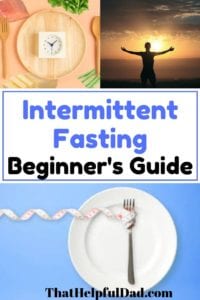
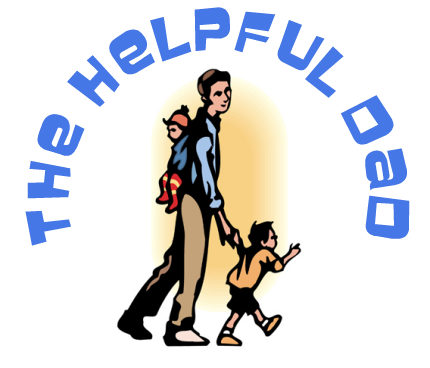
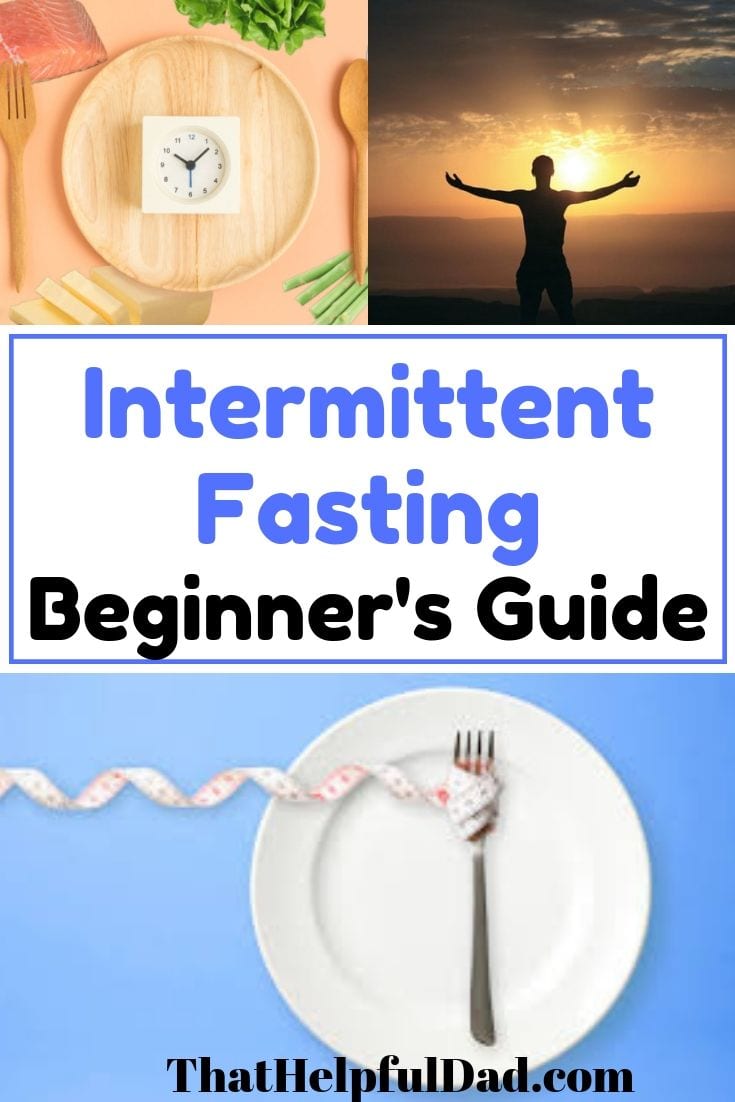
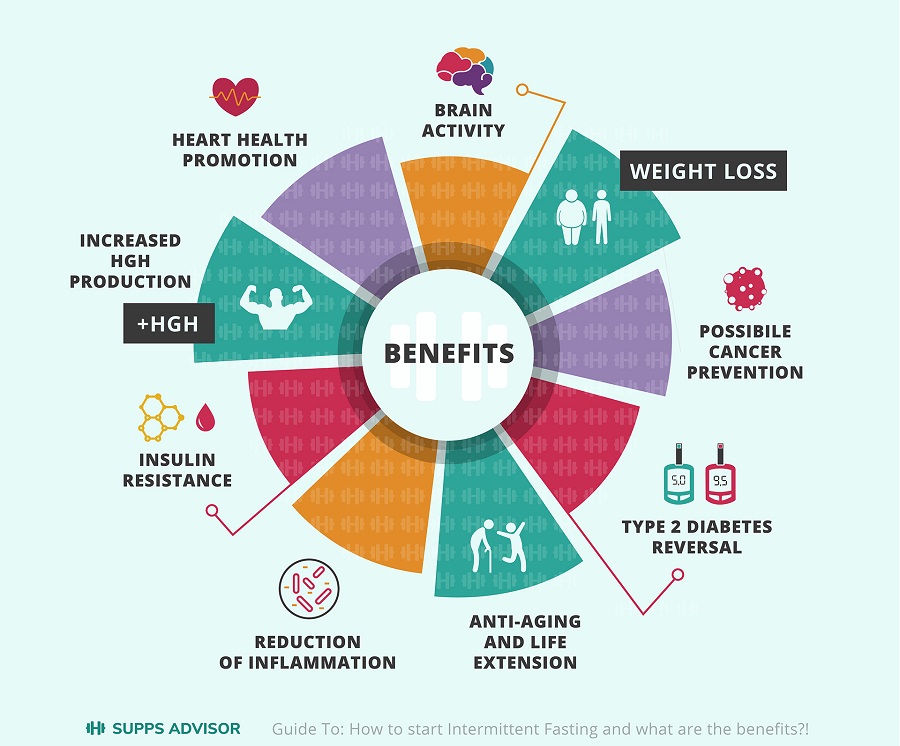
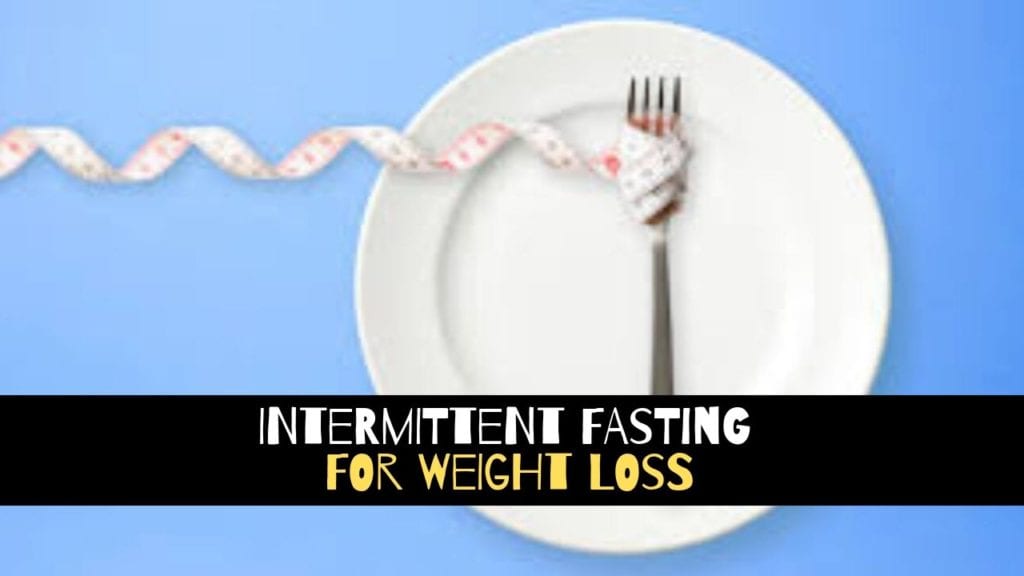
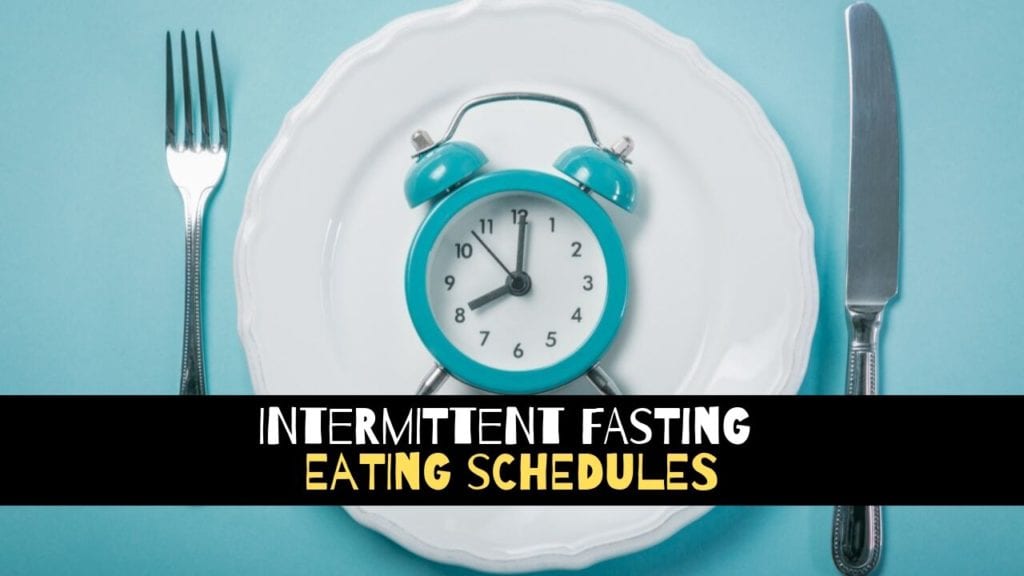
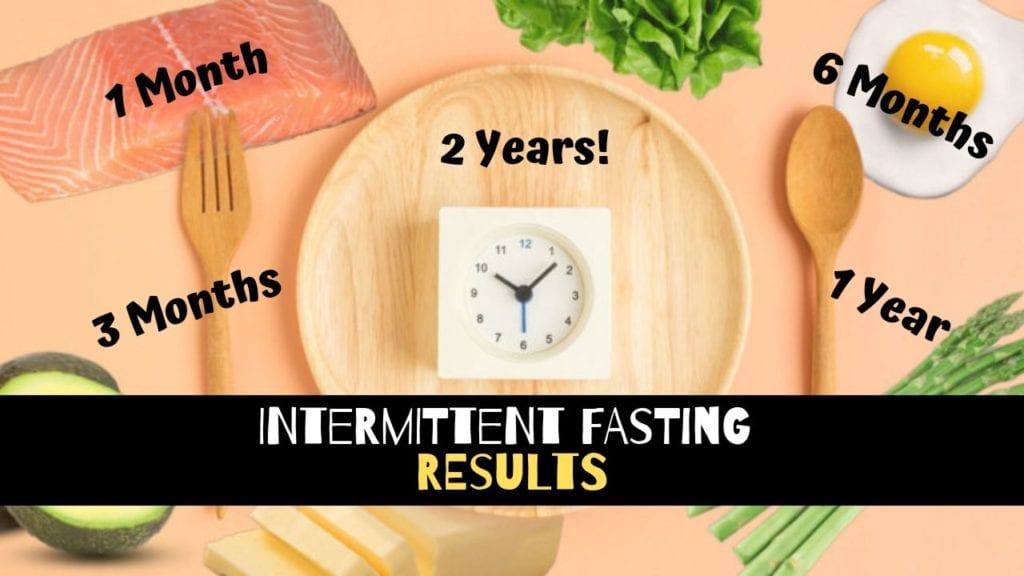

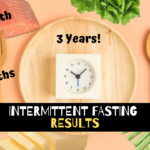
Great article, great advice. I have tried combination of low-impact exercise (3-mile walk and planking) with complete elimination of bread and sweets – salad for lunch, high-protein dinner, no breakfast. It worked well at first but then I hit a wall and even with exercise and diet, could not continue losing. I went from size 38 pants to 36 and have been there for a while, want to get down to a 34 and lose another 20 pounds. The fasting plan could be the answer. Thanks, Helpful Dad!
Thanks for sharing your experience, Michael. The ‘wall’ is always the problem vs long term success, right? I’m averse to eliminating the things I like and that’s always the challenge. What I like about Intermittent Fasting (at least the way I practice it) is that I’ve still been able to eat all the things I like and still achieve ongoing success. I’m about to share my 4 month update in a couple days which shows me getting closer to my goal. Stay tuned. Why not try IF with me and see if we can learn from each other?
Michael – an extensive and complete essay on the topic, thank you. Are there any resources you could add in for ways to avoid the danger of fasting incorrectly and adversely affecting blood sugar or overall health? I know many “experts” are opposed to fasting because of cited dangers, so perhaps this could be addressed with basic guidelines for how to NOT fast? – Michael
Great book by Valter Longo – The Longevity Diet. He’s the leading researcher on fasting and fast-mimicking diets.
Thanks, Kurt, I’ll check it out.
I STARTED KETO/INTERMITTENT FASTING ON JUN 6 2018 I WAS 315 LBS…. AS OF TODAY I’M 225 LBS I HAVE LOST 90 LBS AND FEEL GREAT…..INTERMITTENT FASTING WORKS…….MY LONGEST FAST WAS 7 DAYS.,.
That’s awesome, Daniel. Congrats to you. And I’m impressed on the 7 day fast – wow!